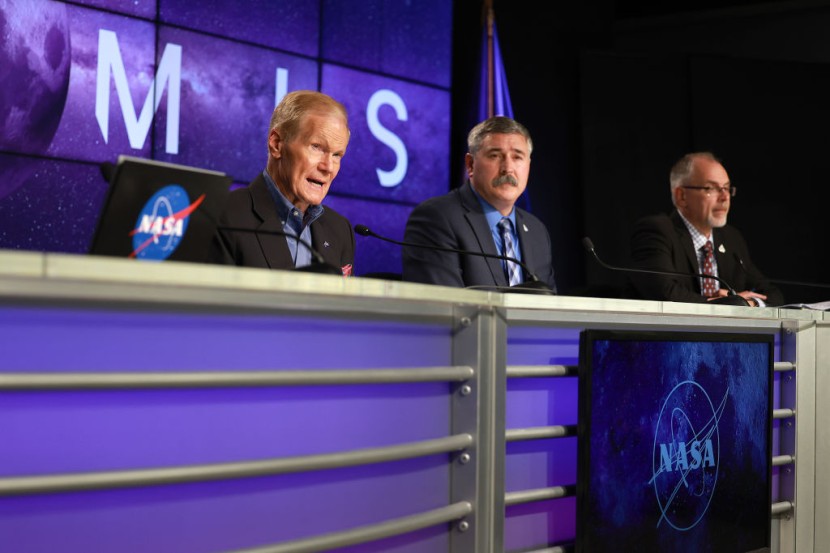
NASA canceled Monday's launch of its highly sophisticated moon rocket owing to unanticipated complications that resulted in an engine malfunction.
The launch of NASA's Artemis project, which seeks to send humans back to the moon for the first time since the Apollo program ended 50 years ago, will be signaled by the completion of the mission.
As crucial minutes of Monday morning passed, NASA twice halted and resumed the fueling of the Space Launch System rocket due to a leak of highly explosive hydrogen, according to AP News.
The seepage was eventually effectively decreased to manageable levels. The leak occurred in the exact same location as the seepage occurred during a dress rehearsal in the spring.
Kennedy Space Center in Florida was already nearly an hour late with fueling due to storms off the coast.
Insiders claim that after that, NASA ran into more issues when it was unable to sufficiently freeze one of the rocket's four main engines. Engineers continued to look for the reason for the problem after the launch was postponed.
Delays Are Part of The Space Industry
NASA administrator Bill Nelson remarked that the rocket is a tremendously sophisticated and complex system, and "you don't want to light the candle until it's ready to go."
Regarding launch delays, he said, "It's just part of the space business" and it's part of, specifically, a test mission.
The New York Times reported that the technical challenges previously mentioned, together with a vent valve issue and weather concerns later in the launch window, would have prevented liftoff on Monday, according to Mike Sarafin, the Artemis I mission manager.
When asked if the organization ought to have conducted additional tests before attempting to launch, Jim Free, a NASA assistant administrator, responded, "We felt like today was the right thing to do. We're not going to have all the implications and data today."
It was a crushing disappointment for the more than 25,000 NASA personnel, dignitaries, and other visitors who traveled to the Kennedy Space Center to see the historic launch, as well as for the tens of thousands of locals and tourists who lined the streets and beaches.
At the heart of NASA's plans to use the $4.1 billion most powerful rocket ever built for a commercial space agency was the launch of men to the moon with the Artemis mission within the next three years. But with the rocket, NASA was not taking any risks.
Launch Director Charlie Blackwell-Thompson stopped the countdown at 8:35 a.m. after many failed attempts to address the hydrogen cooling issue. EDT, two minutes after the start of the two-hour launch window, which started at 8:33 a.m.
The next launch window is at 12:48 p.m. on Friday if the problems from Monday can be resolved quickly and if an additional fueling test is not required.
Engineers continue to assess #Artemis I launch attempt data. On Tuesday, Aug. 30 at 6pm ET (22:00 UTC) we’ll provide an update on the status of the @NASAArtemis flight test. Details: https://t.co/aYUGR2rT2r pic.twitter.com/lt3o6x6GXg
— NASA (@NASA) August 29, 2022
Why Do NASA Wants To Go Back To The Moon?
Before landing the first humans on Mars, NASA plans to return to the lunar surface, but in a completely new method.
The final crewed lunar landing, performed by Apollo 17, took place about 50 years ago. The final Apollo mission, which lasted 12.5 days, still holds the record for the longest crewed deep space journey.
The Artemis program will send astronauts on lengthy deep space journeys to land people on Mars ultimately as well as close to the unexplored lunar south pole, CNN reported. The limits of discovery will be fully pushed by these missions.
"We're going back to the moon to learn to live, to work, to survive," Nelson said during a news conference earlier this month.
He further stated: "How do you keep humans alive in those hostile conditions? And we're going to learn how to use the resources on the moon in order to be able to build things in the future as we go - not a quarter of a million miles away, not a three-day journey - but millions and millions of miles away on months and months if not years-long journey."








